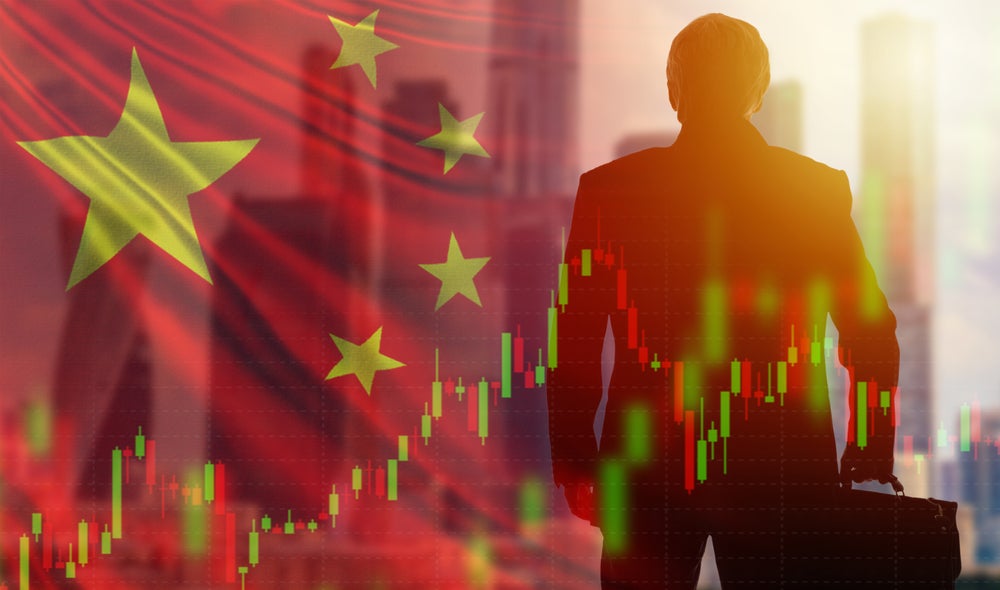A hard landing is where growth either falls abruptly or continues to slow towards zero, or not far above it. Over the past year, China slowed significantly. It is already having a soft-landing.
In some respects, people, both within and outside China, have almost become too used to strong growth. Throughout this century, China has achieved double-digit growth, or very close to it.
At a recent speech in Tianjin, I was in the audience as Premier Wen Jiabao gave an impressive summary of China’s last decade; it included the remarkable fact that living standards have risen five-fold during that time. After such a track record, it would be no surprise if there was a set-back. Moreover, one does not have to look too far back to see that, in the 1990s, China had a significant hiccup as growth slowed sharply.
Indeed, as China’s economy grows larger, I think a set-back becomes more likely. In part, this is because the business cycle exists in China, as elsewhere. But it is also because China’s policy-making set-up and its institutional framework have not kept pace with the economy’s growth.
All in all, perhaps the question should not be whether China will have a set-back, but when will it be and how China will cope?
I visited Tianjin in September for the "Summer Davos". Each year, in January, the great and the good of civil society and of the business, financial and political worlds gather in Davos, Switzerland, for the annual World Economic Forum meeting. Because of the timing of their New Year, the Chinese tend not to travel to Davos in big numbers. Hence, each September, over the past six years, a similar event has been held in China: "Summer Davos".
How well do you really know your competitors?
Access the most comprehensive Company Profiles on the market, powered by GlobalData. Save hours of research. Gain competitive edge.

Thank you!
Your download email will arrive shortly
Not ready to buy yet? Download a free sample
We are confident about the unique quality of our Company Profiles. However, we want you to make the most beneficial decision for your business, so we offer a free sample that you can download by submitting the below form
By GlobalDataThe mood of the international and Chinese business people in Tianjin was one of uncertainty, not one of pessimism towards China. The issue was not about where China’s economy was heading but how it would get there. The destination was a stronger, wealthier and more powerful economy. The path, though, was uncertain and strewn with challenges.
Of course, when everyone agrees on something, it is often proved to be wrong. This provides an immediate warning: for China to not be complacent. Nothing is guaranteed.
China’s old growth model is dead. A new one is needed. China is moving from an investment- and export-led economy to one driven more by consumer spending. Investment is over 48% of China’s economy. This is an incredibly high ratio and compares with a global average of around 22%. China wants to lower this ratio, but to a still-high figure between 38% and 40% because of urbanisation and continued industrialisation.
High investment leaves China vulnerable to a loss of confidence. It would require investment to decline only by a tenth to knock 4.8% off economic growth. That is why the current soft-landing could always turn out to be harder, particularly if confidence dips.
While China wants the share of investment to fall, last year’s 12th Five-Year Plan was aimed at boosting consumption, social welfare, and a green economy, and at moving China into higher-valued-added areas.
One implication of changing the model for China’s economy is the need to focus less on quantity and more on the quality of growth. That means worrying less about the decimal point in China’s GDP number and, instead, seeing where growth is coming from. And that is a key message, for China has the ability to ease policy if it wanted to, in order to achieve strong growth. The message is that it is quality, not just quantity, which matters.
China was hit hard by the global recession as exports slowed. It then unveiled a huge fiscal stimulus. Although the economy rebounded strongly, the authorities appear reluctant to repeat the scale of that boost now.
There is a feeling that pumping so much money into the economy created problems, leading local governments to get into financial difficulty and to many projects being rushed, leading to poor quality of construction. In recent months, there have been too many stories of collapsing roads. Although these are only a small proportion of those built, it is enough to cause angst.
In his speech, Premier Wen also stressed China’s main current themes: a prudent fiscal policy and a pro-active monetary policy. The message was, not to worry about this slowdown getting out of hand, as the authorities will ease policy to prevent growth weakening too much. Indeed, since May, the authorities have eased policy.
The question is, how much of a slowdown? Until two months ago, there was a clear divide. Exporters were complaining, hit by weak global demand. In contrast, firms selling to China’s domestic market were in good shape. More recently, particularly as the euro crisis escalated, the weakness from exporters spread, impacting manufacturing and weighing on domestic spending. People in China have become less confident recently.
Still, this is not like the end of 2008, when 30 million migrant workers lost their jobs. At least not yet. As many as 11m new jobs have been created this year.
While the pace and scale of change in China are huge, so too is its catch-up potential. For instance, China’s income-per-head is only 18% of that in the US.
Yet, China’s biggest challenge is its institutional set-up. It is still run from Beijing in much the same way as when it was a smaller economy. Also, its financial system is repressed, with big constraints in place. This means that, unlike in the US, the transmission mechanism of monetary policy is not always smooth. There are other areas too that cause uncertainty, such as the upcoming leadership change. Perhaps, the surprise might be a more reformist agenda. We shall see.
We should also not be surprised by what happens on the military side. The South and East China Seas are increasingly becoming diplomatic hot-spots. And a greater US naval presence in those regions is only likely to reinforce that.
Perhaps the key questions, therefore, should be, Where are the greatest shocks ahead for China? and Will they be able to cope?
Putting recent developments alongside the imbalanced nature of China’s economy, the implication is clear: do not be surprised if there are slowdowns like the one we are seeing now. But even if there were a set-back, it would not mean that China’s economic boom is over. Far from it. The trend in China’s economy is up, but one should expect set-backs along the way.
China is not the first country to enter a new phase of growth. It is called the middle-income trap. For any economy, a move from low- to middle-income status as China has achieved is much easier than the challenge of taking the next step to becoming a high-income economy. Usually, one-in-three countries succeed in taking that next step. I think China will be one of them, but it is not going to be easy.
As the world’s second-biggest economy, China’s prospects have a huge global impact. After the global recession, the world economy grew strongly by 4.4% in 2010, helped by policy stimulus in the West and by a rebound in China and other emerging economies.
Then, in 2011, global growth slowed to 3.1% as policy stimulus in the West wore off and China raised interest rates to curb inflation. Last December, I forecast that global growth will be only 2.2% this year because of recession in Europe and the UK, only steady growth in the US, and a slowdown in China. That was one of the weakest forecasts out there, and it has been proved correct. The current situation is also highly uncertain.
Yet, despite likely weakness in the coming months, global growth should pick-up modestly next year and, if it does, China will play a key role.
Dr Gerard Lyons is the chief economist and group head of Global Research at Standard Chartered Bank





